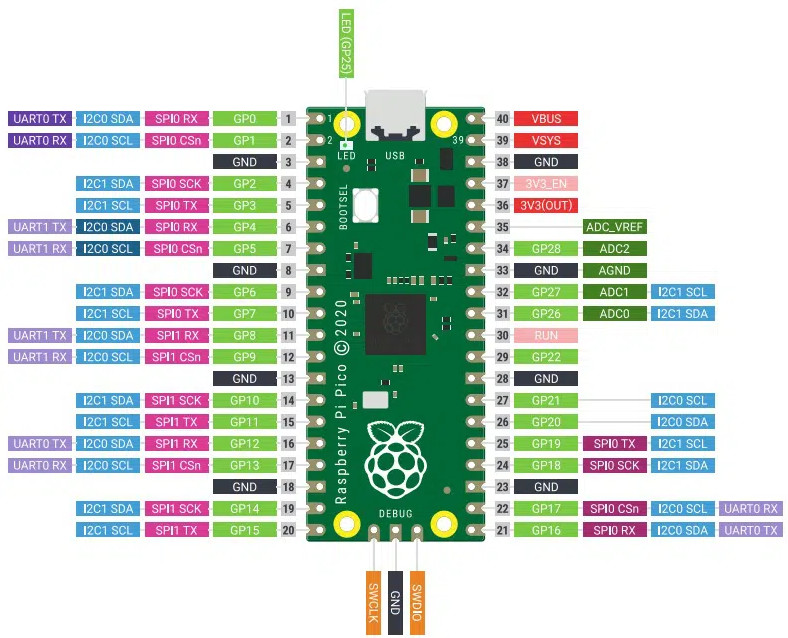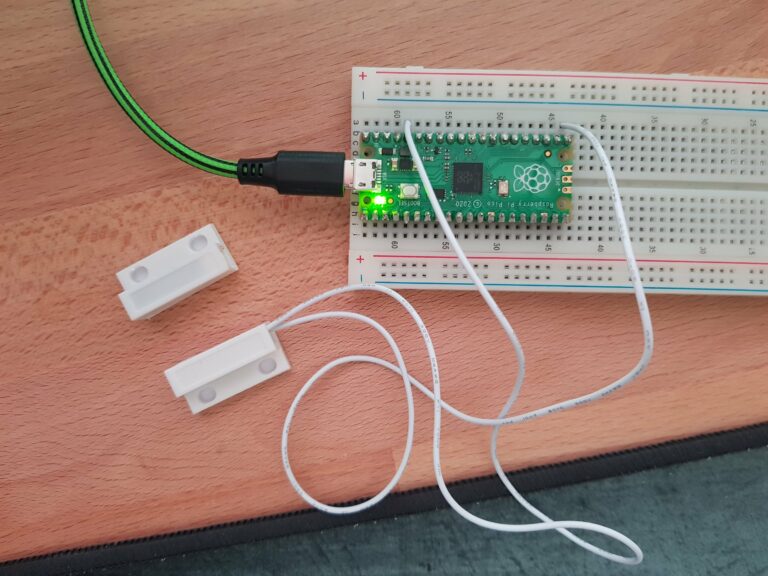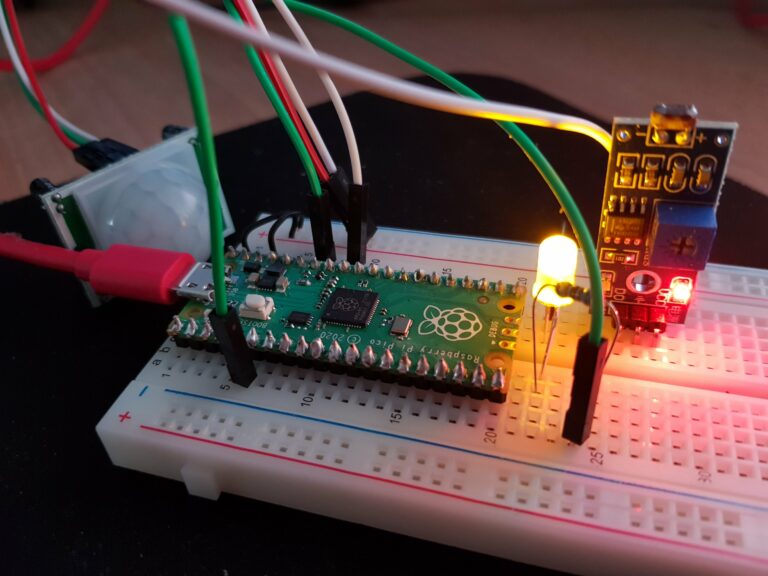A tiny multitalent: Raspberry Pico Pinout
The pinout of Pi Pico and Pico W are the same. Just the onboard LED has changed. See below.

from machine import Pin
Pin(25, Pin.OUT)from machine import Pin
Pin("LED", Pin.OUT)

Jump to: Pico – D1 mini – Pi Zero Raspberry Pico A short Python implementation of a magnetic switch turning on a LED when it is not connected (e.g. window is opened). For simplicity reasons I used the builtin LED on the Pico. You have to use the pull=Pin.PULL_DOWN parameter for the input pin (sensor)….

A small helper at night and a nice little excercise on the Pico: an LED that lights up when it is dark and something moves. I used a HC-SR501 as motion sensor, light sensor with digital output, a yellow LED of my Pico project complete kit (330 Ohm resistor with it) and of course the…

Thank you AZ-Delivery for this pinout! And thanks for best prices for this. They have got some really good offers here: https://amzn.eu/d/2ZqjALZ (no affiliate link) The onboard LED is at GPIO 2. Checkout Random Nerds Tutorials for which GPIOs to use.

As all the Raspberry Pis have the same pinout – here is a overview valid for all of them. Thank you pinout.xyz for your great service! The HDMI and USB ports are on the left, the SD card slot on top and the pins on the right.

Great microcontroller, bought it at az-delivery.de (no ref link). The onboard LED pin is 2 (GPIO 4).

This covers a very configurable and more complex variant of measuring brightness and turning on LEDs.If you are looking for a more basic variant: It all began with a LDR and curiosity. The result is a night light for a ESP8266 like D1 Mini or Raspberry Pi Pico (W) which compensates darkness with many configurable…